VDI 6020 –
„Requirements for calculation methods for building and system simulation Building simulation“.
VDI 6020 forms a validation procedure with different test cases for building energy simulation (BES, short for Building Energy Simulation) programs. The validation is performed according to two different scenarios:
- In scenario 1, only the thermal energy simulation without technical building equipment is validated. This part is fully described in VDI 6007.
- In scenario 2, the BES tools are validated with respect to the technical building equipment. These test cases are mainly described in VDI 2078.
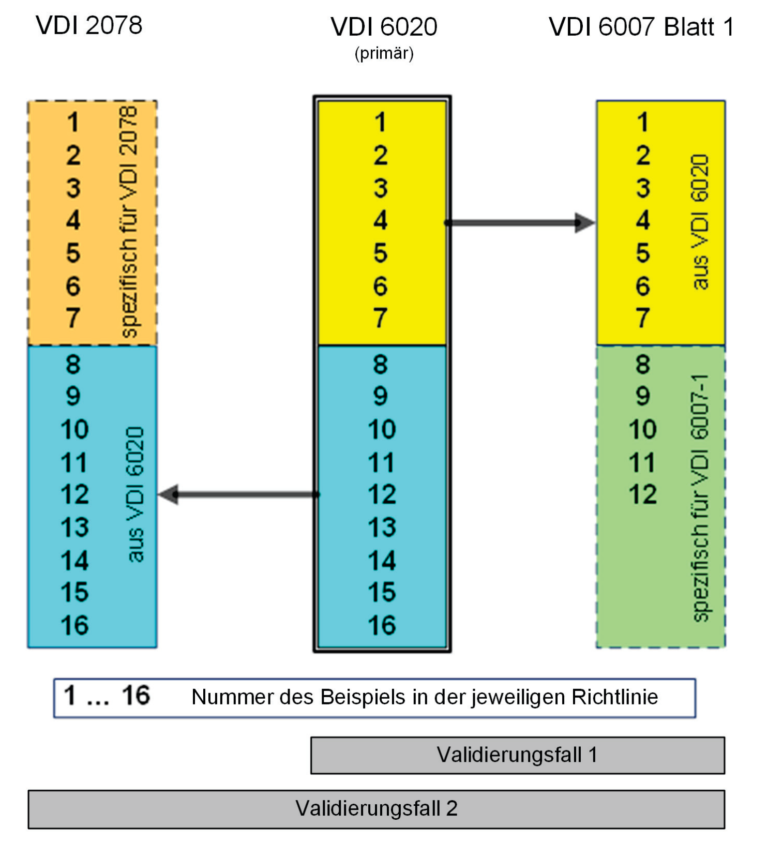
VDI 6007 part 1 and VDI 2078 and assignment of the
test examples to the two validation cases of the
VDI 6020
The VDI thus contains a total of 16 different test cases (8 for scenario 1 as well as 8 for scenario 2) with different examined geometries and space types. However, there are several obstacles/problems with the validation procedure described in the VDI. First, there are three different documents (main document, extension sheets, as well as Excel documents) with redundant and partially contradictory input data. When performing a test case, much effort is required by the processor to determine the correct input data for each test case. In some cases, the documented input data is simply incorrect or redundant and it is up to the processor to make an assumption as to which data should be considered correct. Furthermore, the validation suite actually tests a very specific model description and solution procedure. While this is usually a good approach to verifying different implementations of the same model and parameter set, it is also the major weakness of this test standard. The model being tested is the specific VDI calculation model based on the Beuken model. However, this model greatly simplifies the actual building physics, resulting in quite large approximation errors in some situations. When using a very detailed physical model to calculate the prescribed VDI test cases, these approximation errors become apparent. Since the VDI validation reference results are quite close to the Weren calculated with the VDI-Beuken model, it is therefore almost impossible to achieve a match with a more detailed simulation model.
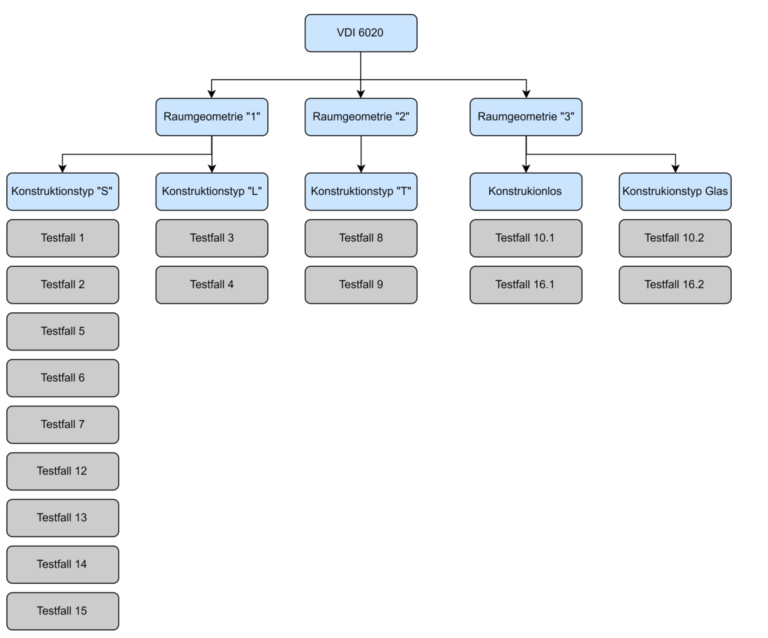
NANDRAD according to VDI“, Vladi Shuralew 2019)
It is true that the VDI refers to a statistical mehtode (mean, standard deviation), which can be used to validate other calculation methods, thus using a wider band of the exceptions. However, the CD of Excel files attached to the VDI is so unstructured that it is difficult to know which file to use without external expertise. However, the reference results used for this purpose are also calculated to the simplified VDI model, so that more physically correct simulation results are not always accepted as correct. Consequently, it is arguable to require a modern, physically detailed building energy simulation model to comply with the VDI validation standard. From our analysis of the VDI 6020 test standard, we conclude that only VDI 6007 as well as 2078 should actually use this VDI guideline to validate implementations of VDI guideline 6007 only.
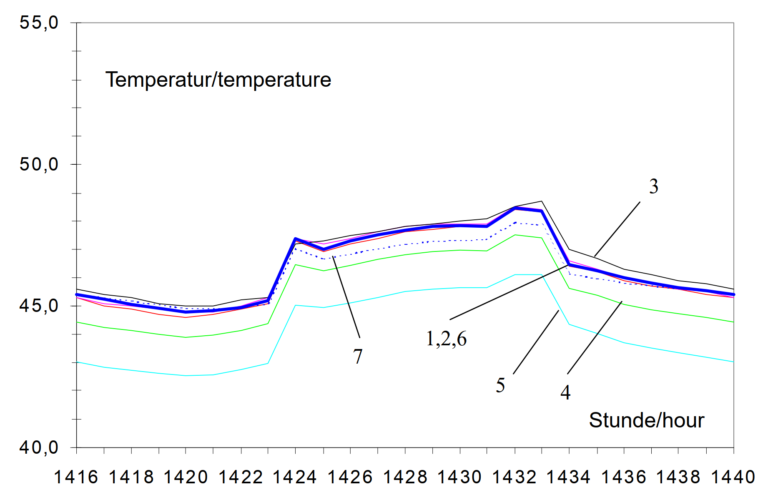
VDI 6007 –
„Calculation of the transient thermal behavior of rooms and buildings“.
Space model
VDI 6007 describes a calculation method based on a substitute model. This substitute model is based on the fundamental approach of considering a wall like an electrical component. Thereby, this wall has a resistance as well as a capacity for at least each layer (plaster, insulation, masonry, etc.). The latter represents the heat storage capacity. For example, an insulating material has a high resistance because the heat cannot flow through it well, but a small capacity because it cannot store the heat well. This is illustrated in Figure 1. An even more accurate illustration is obtained if the individual layers are further subdivided. The temperature difference between the inside of the room and the outside air is equivalent to the voltage in the electric circuit.
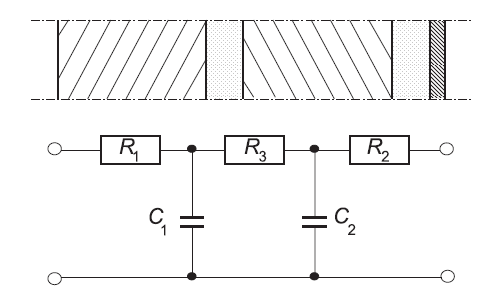
In order to be able to calculate a room with this, all components of the room must now be inserted into a circuit diagram. The resulting circuit is still very complicated, however, so it is simplified by mathematically combining the capacitances of all interior walls into one and the capacitances of all exterior walls into a second capacitance, as shown in Figure 2. The two capacities for heat storage of the interior and exterior components are labeled C1;IW and C1;AW, respectively. By combining them in this way, the model can be simulated very quickly. However, the model is somewhat less accurate and the results slightly different from the physically more correct model with many capacities.
VDI 2078 –
“Berechnung der thermischen Lasten und Raumtemperaturen (Auslegung Kühllast und Jahressimulation)
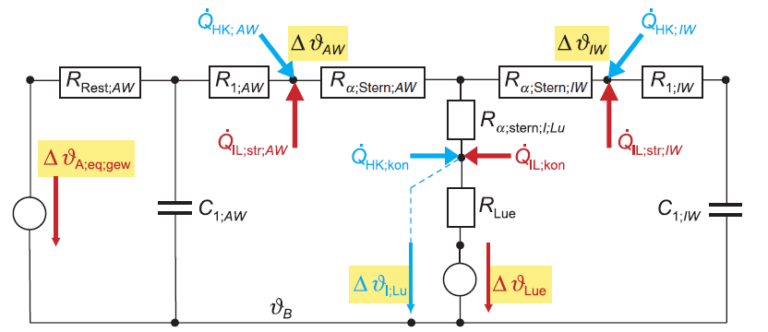
The VDI 2078 for cooling load calculation also uses this model, since it can be calculated quickly and has sufficient accuracy for many cases. For the VDI 2078, artificial, precisely predefined weather data are still used. Both VDI 6007 and VDI 2078 give several validation examples. Here, however, the correct implementation of the calculation procedure according to VDI 6007 is explicitly checked. Here, the validation examples, especially in VDI 2078, are so detailed to the corresponding calculation method that a calculation with another model cannot be validated according to these validation examples. This means that different simulation methods cannot be compared with each other.
